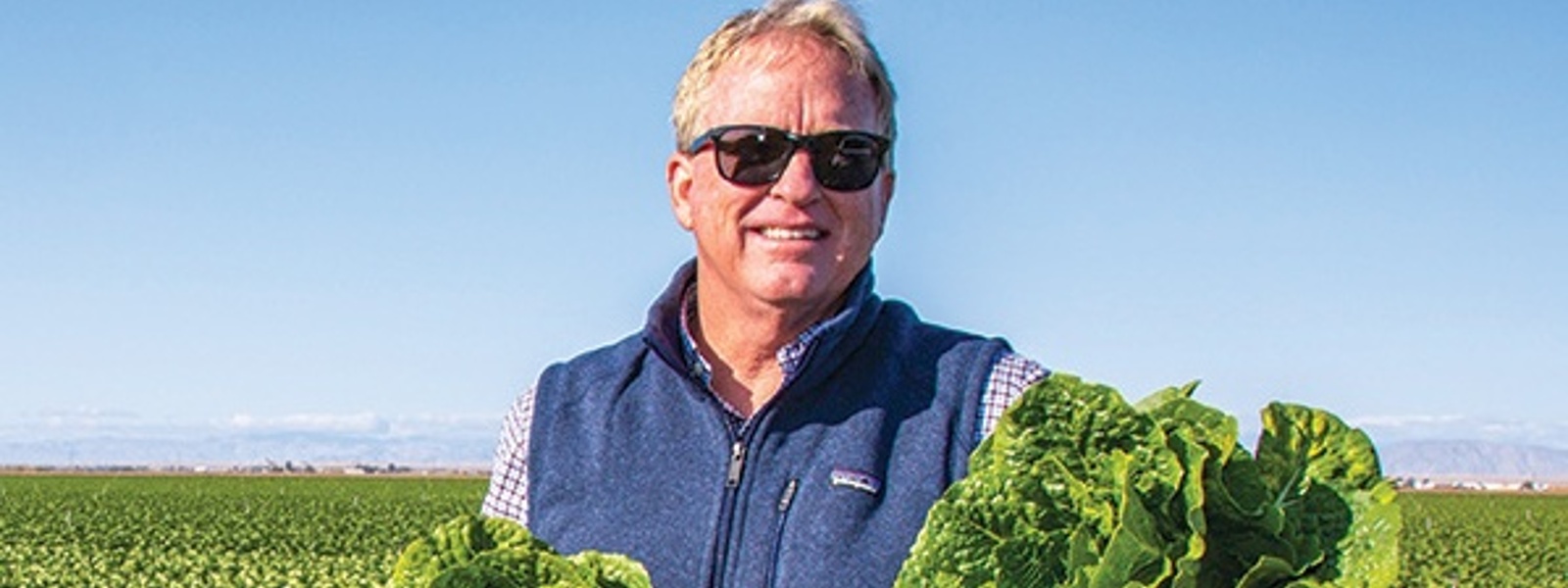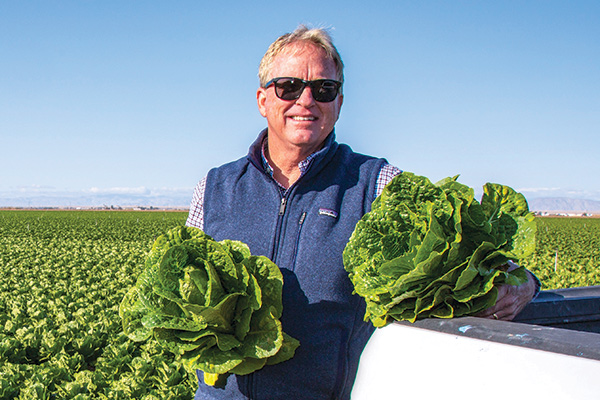Ask a farmer: Lett-uce thank the valley

January/February 2023 California Bountiful magazine

Farmer helps keep veggies
on the table during winter
Story by Linda DuBois
Photo by Joy Kramer
North Americans can enjoy a bounty of vegetables and salad in the dead of winter, thanks in large part to farmers in the Imperial Valley desert region. Farms there grow at least two-thirds of the fresh vegetables consumed in the U.S. during the cold-weather months.
One of these growers is Alex Jack, a third-generation farmer who provides the U.S. and Canada with fresh broccoli, cauliflower and lettuce from November through early April. Also through the winter, he grows greens and other vegetables for an organic juice company. During warmer months, he replants the harvested fields with wheat or Sudan grass and also grows alfalfa year-round in separate fields.
His family has been farming in the valley since his grandfather started Jack Bros. farm in Brawley in 1914. After serving in World War I, he started a business, buying vegetables from farmers, driving them down to Los Angeles and selling them. After about a year, he decided he also wanted to grow his own.
“When my father got out of the second World War, he took over the farming operation because my grandfather’s health was failing, and then my father ran it until 1989. Then, he handed the reins over to me,” Jack says.
They dig shorts weather
Jack buys plant starts from a nursery in King City and usually plants from late August through mid-December and harvests from early November to early April. This cycle ensures the plants will be in the ground during the months with the ideal weather for winter vegetables—pleasantly warm. Jack compares Imperial Valley winters to those in Palm Springs. “It’s that kind of weather, where you can golf and some days still wear shorts,” he says.
Challenges heat up
Conversely, the weather can also be Jack’s biggest challenge. “When we start planting in late August, there can be extreme heat, which really stresses the plants. Then, next thing you know, they’ll be calling for a hurricane coming up the Gulf of Mexico. Weather for us changes so dramatically from when we start planting in August to our last planting in December. Every day, every planting seems a little different than the one the day before and the day after.”
Top priority
“The most important thing to growing vegetables is having really good dirt. If you have mediocre dirt, I don’t care how good a farmer you are—you’re going to fight it all season,” Jack says. “Some areas in our valley are very heavy clay, some are extremely sandy, some are sand on top of clay. … After 108 years of working with it, we finally got to where we have firmer dirt (which holds the nutrients and the roots) on top of the lighter dirt,” ensuring good drainage.
Precious resource
The farm aims to be “highly efficient” with water, Jack says. “My father was on the local water board. He wanted to set a good example, so he started doing water conservation measures back in the ‘70s.” He started implementing drip irrigation by the early 1980s and flattened off sloped fields to prevent runoff. Since Jack has taken over, he’s added more electronic sensors that keep the soil moisture at an optimum range, no matter what the weather does.
Harvest time
During harvest, a crew on the ground cuts the lettuce, broccoli or cauliflower and places it on a conveyer belt on a large harvest machine following them. Then, employees on top of the machines pack it into boxes and place the filled boxes onto another conveyor belt that takes the boxes to a trailer next to the harvest machine. Once full, the trailer hauls the boxes to a refrigerated room, and another trailer pulls in to replace it in the fields, keeping the process flowing.
Off to the table
Jack estimates 70% of his produce heads to grocery companies and 30% to food services like restaurants, schools or prisons. “I would say 95% of it stays here in the United States and Canada, and a small percentage goes to Japan and Europe.” When Jack wraps up his season, the Salinas Valley takes over. “So, pretty much, the day that we’re done, they start and the day they’re done, we start. … It’s all dialed in to where we can have these vegetables coming every day of the year.”

